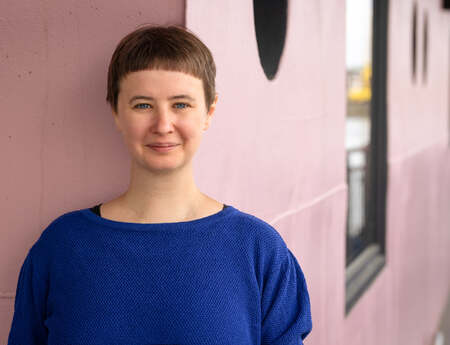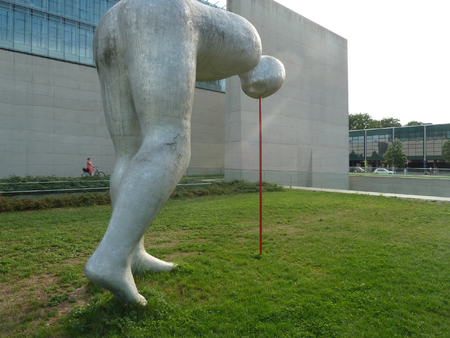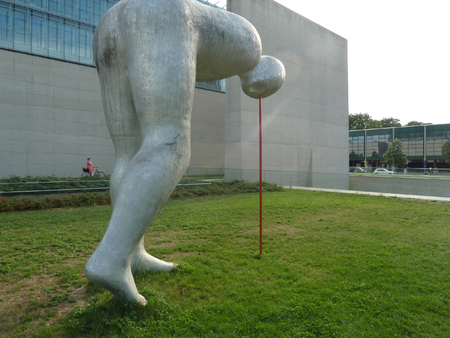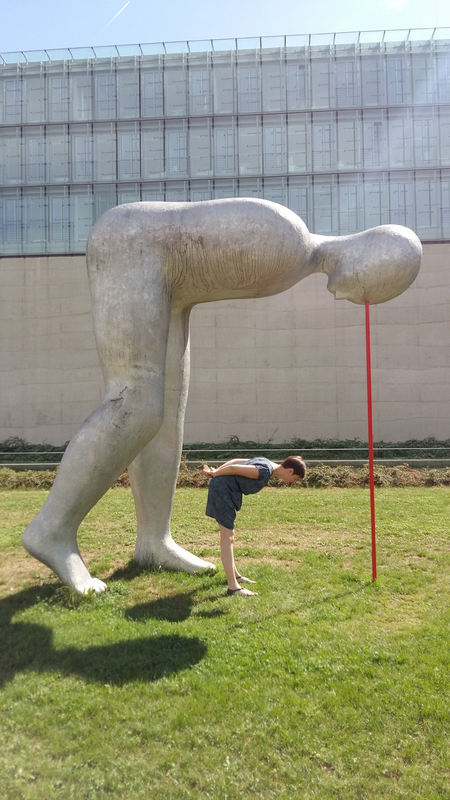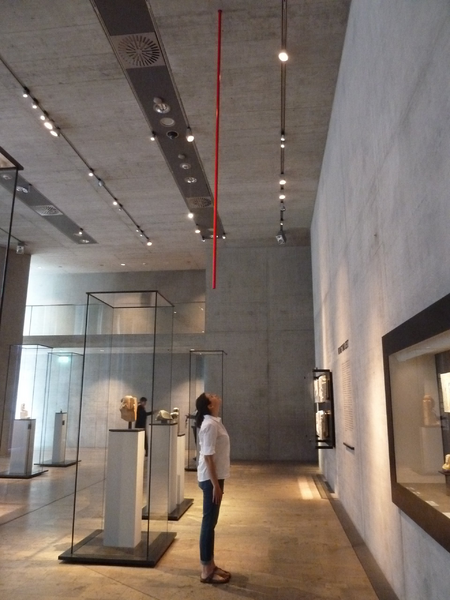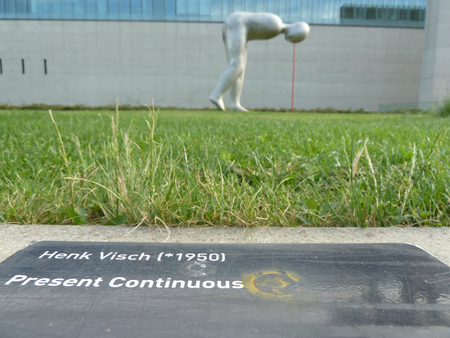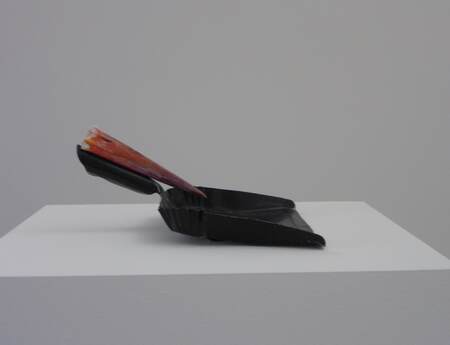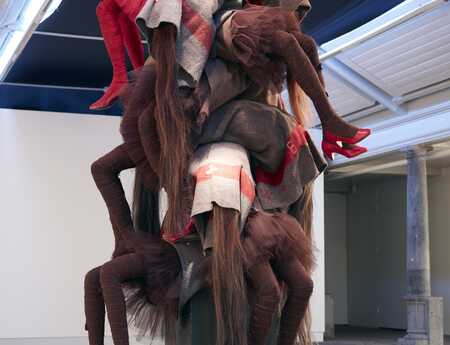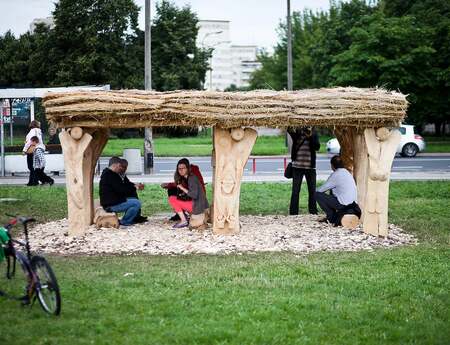Love at Second Glance
Exploring Sculpture and Architecture 1: The metal sculpture Present Continuous and the Museum for Egyptian Art in Munich
It is a sunny Saturday in the Bavarian capitol and people are lying on the grass of the lawn between the museums, one group of students is even playing volleyball. It seems as if the sun has called everyone out of doors – to the green spaces and the outdoor seating of the sidewalk cafes. I have a date to meet a good friend in front of the Museum of Egyptian Art. Over the next few months I plan to further immerse myself into this year’s sculpture network theme with the series of Exploring Sculpture and Architecture. And where better to begin the journey than in my hometown of Munich?
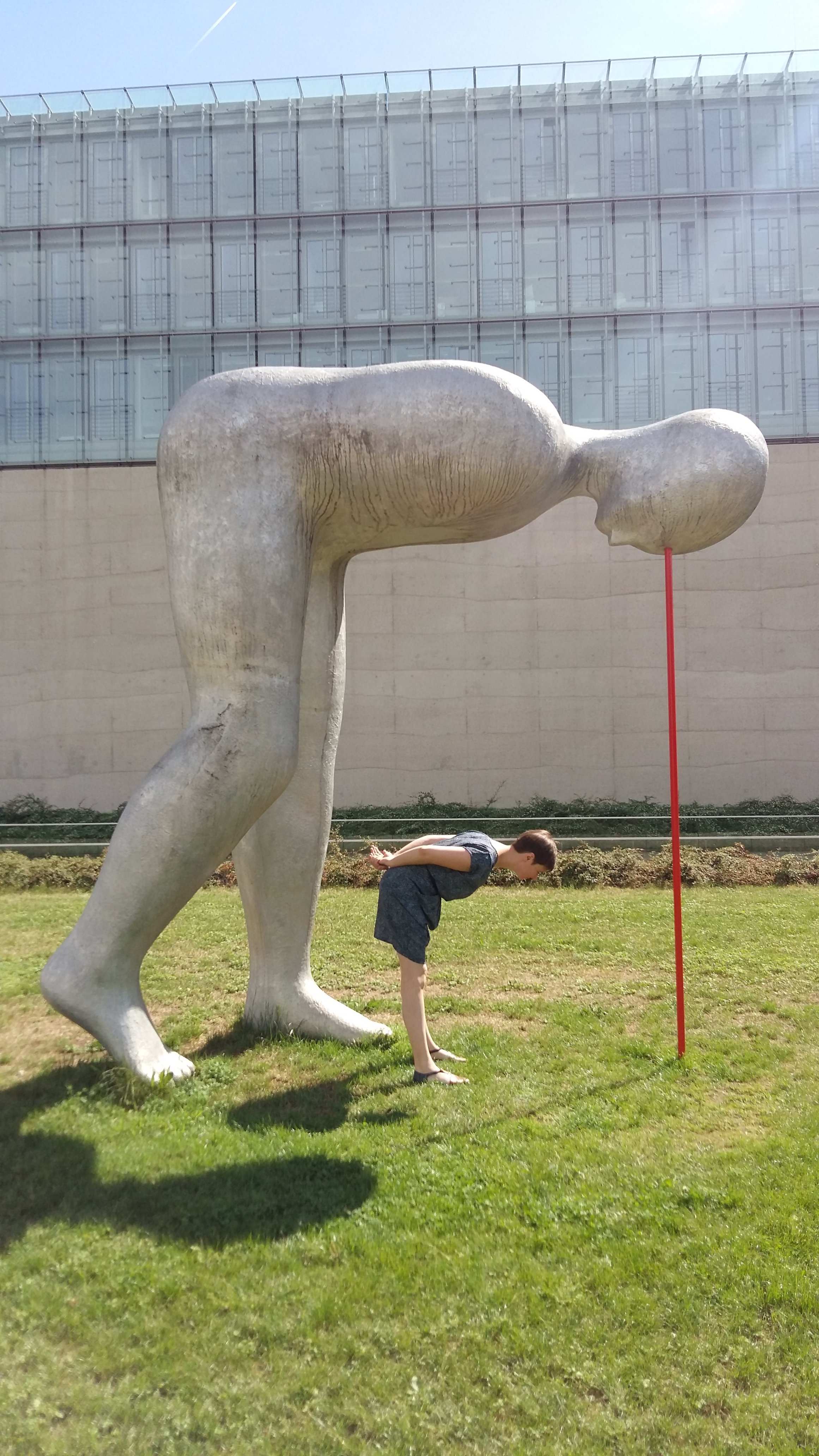
by Henk Visch
The sculpture that we want to examine more closely is called Present Continuous and was created by the Dutch artist Henk Visch (*1950). The 3.8 meter tall aluminum figure was installed as part of the sculpture park of the Pinakothek in 2011.
The architecture was completed in the same year. The German architect Peter Böhm (*1954) designed the building which is home to both the University of Television and Film and the Museum for Egyptian Art.
My first glance of the sculpture and the museum were, strictly speaking, quite a while ago - during my internship at sculpture network there was a coordinators’ meeting during which we visited the Egyptian Museum. I particularly remember the unique connection between the figure outside and the subterranean museum - a red rod extends through the earth and into the exhibit rooms.
I have this image in my mind as I walk towards the museum and am, at first, somewhat disappointed. I remember the figure to be much larger and more impressive and my friend’s first comments are also pretty negative: „You know that I think this sculpture is really horrible because I always think that it is vomiting a stream of blood.“ Unfortunately, the various nicknames Munich has given this piece of art (which include „Barfi“, „Ass“ and „Head Shot“) support her opinion.
I begin to feel somewhat disillusioned. Should my journey of discovery for sculpture and architecture really start with „Barfi“ at the Egyptian Museum?
We decide to first enjoy some sun and get a bite to eat on a roof-top terrace that offers a view of the city so that we can start our expedition with a full stomach and give it all a second chance.
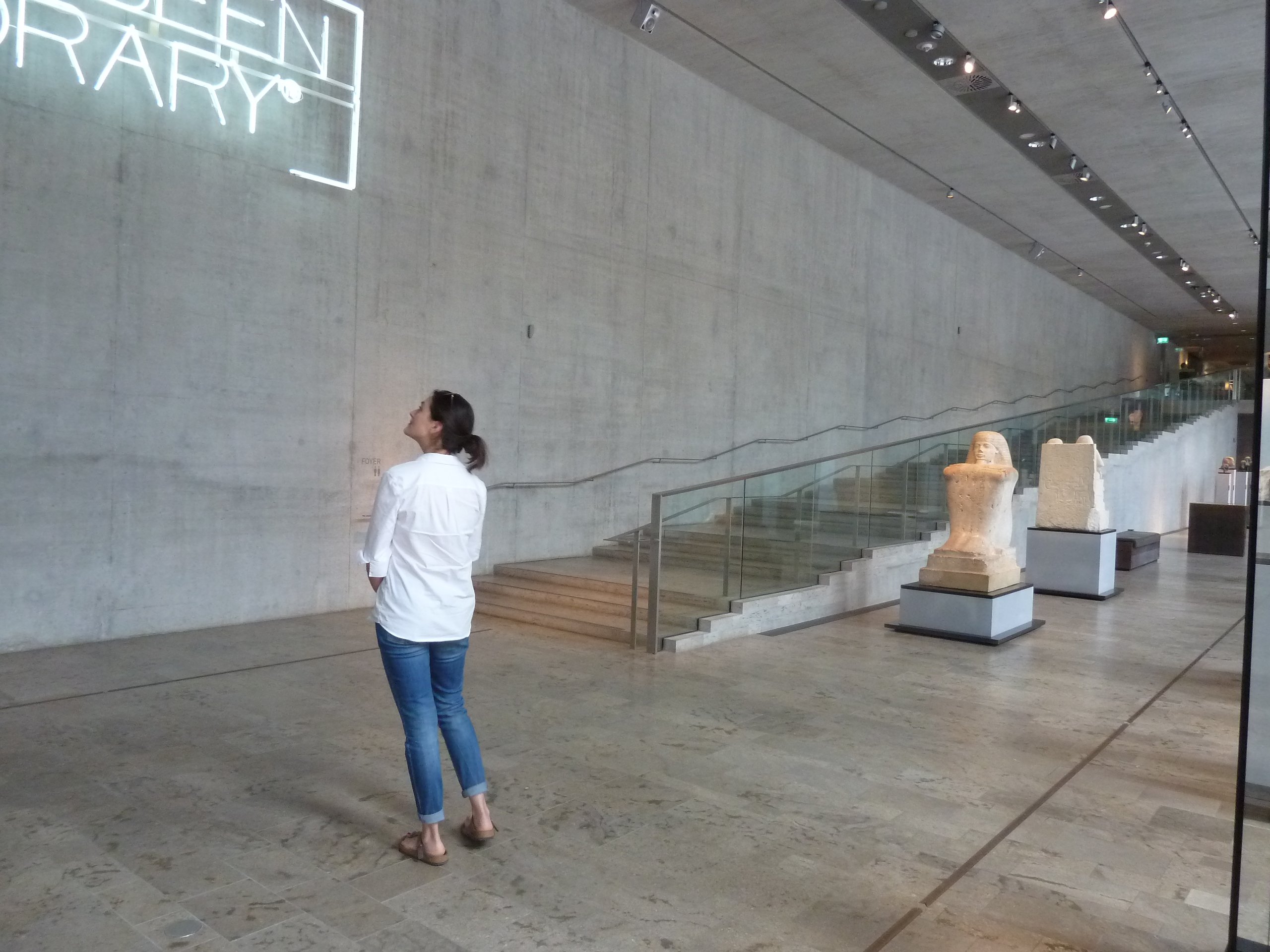
"ALL ART HAS BEEN CONTEMPORARY"
by Maurizio Nannucci
The second glance leads us into the underground museum, despite the sunshine, but with full stomachs. Both the entrance to the building, as well as the one into the actual exhibit rooms are made via a wide flight of stairs. „I really like going down the stairs into the museum. It’s as if we are slowly being prepared for a journey through time“, says my friend as we enter the gallery. At the start of our tour we are not greeted by ancient Egyptian art, but by a work designed by the Italian concept and lighting artist Maurizio Nannucci (*1939). In large, shining letters ALL ART HAS BEEN CONTEMPORARY is written on the wall.
A very polite museum attendant points out the bronze arrows that have been set into the floor and which guide us along our path through the collection. Although we are underground, the rooms are flooded with light. A sunken atrium allows daylight to penetrate into the large rooms which have an atmosphere of sacredness. Curiously we investigate the ancient artifacts from the long-forgotten age of the Pharaohs. They are presented on pedestals made of simple concrete which match the building. With its smart and simple room and light design the architecture serves as a backdrop for the art and enhances it.
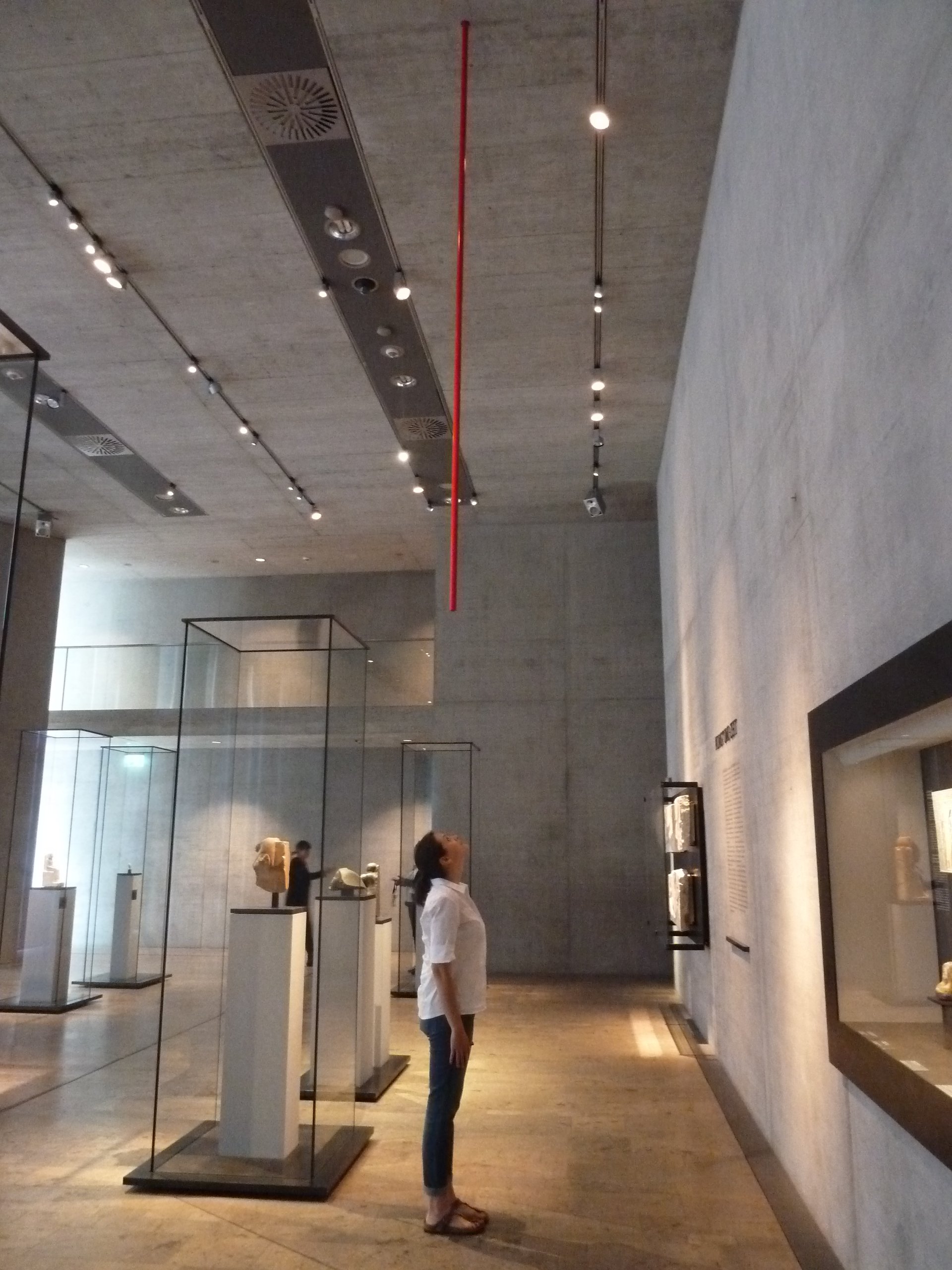
the underground museum
In the second part of the collection we again notice the red rod hanging from the ceiling: it is the extension of Present Continuous. Standing in the subterranean museum it no longer reminds us of the images we previously associated with the sculpture. On the contrary – it discreetly, but clearly connects the surface above ground, i.e. the present-day in the middle of a lively city, with the subterranean, a museum in which treasures from an incomprehensibly distant past are stored. As we continue our tour through the exhibit this dimension of time is repeatedly called to our attention. We come across the phrase „And only three hundred years later (...)” in one of the descriptions and smile at this concept of time which is quite foreign to us.
Back on the surface we study the sculpture on the lawn one last time. It also shows traces of age – rain has etched black lines on the silver metal. A small plaque at the edge of the sidewalk now reveals the title of the work: Present Continuous actually describes an English verb tense that is used when something is just happening, but not yet completed.
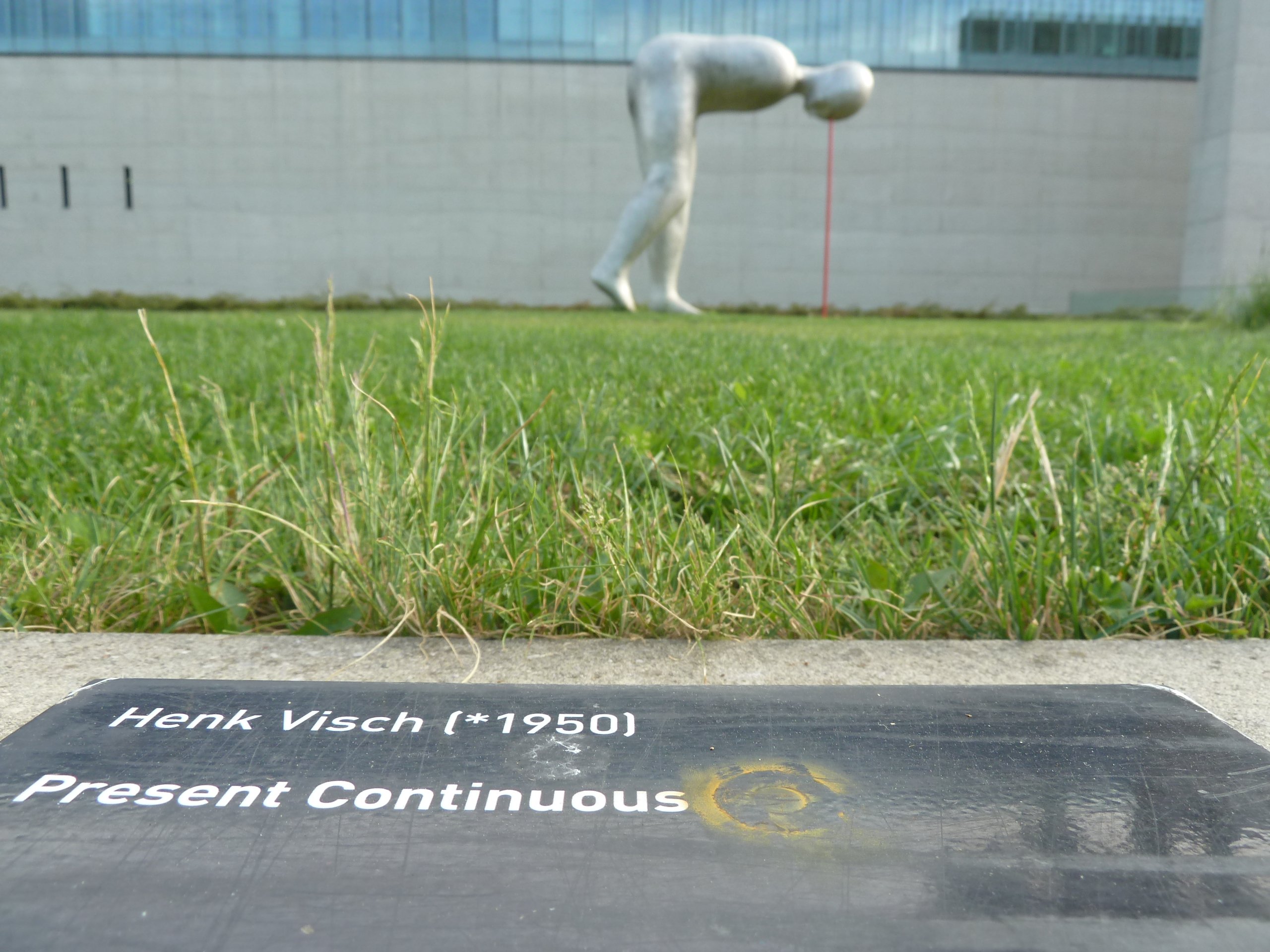
between the past and the present
We may not be able to get the image of a person vomiting out of our heads, but we are agreed that it was worthwhile to take another look at the sculpture. Together the sculpture and the architecture bridge the gap between the past and the present and remind us - very much in accordance with Maurizio Nannucci – not only that all art has been contemporary, but also that every moment was also once contemporary.
Author: Elisabeth Pilhofer
Elisabeth Pilhofer is a freelance editor and curator based in Munich. This summer she explores places where sculpture meets architecture.

